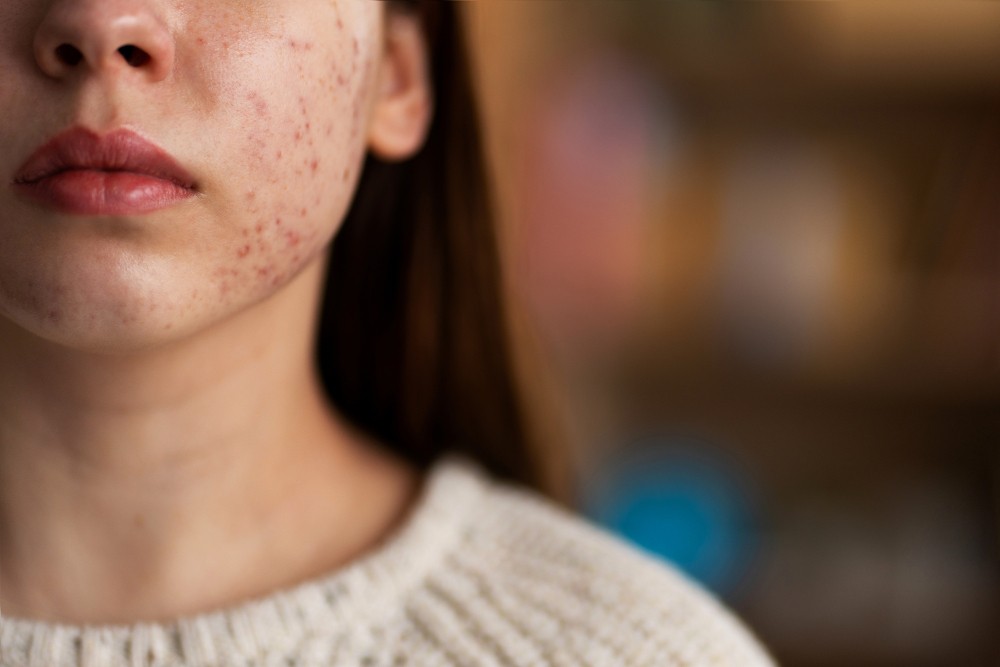There are many ways to treat acne, including using acne patches or stickers. Acne patches are very popular nowadays due to their ease of application. But how do these tiny stickers that are applied directly to pimples actually work?
How do acne patches work?
The majority of acne patches are made of a hydrocolloid material that absorbs and dries acne fluids. In general, acne patches, particularly hydrocolloid ones, work as follows:
- Protection: Acne patches protect acne from dirt, bacteria, and physical contact, which can worsen the condition.
- Absorption and UV protection: In addition to absorbing the fluid in the pimple, these hydrocolloid-containing patches can block more UV radiation than surgical plasters. This helps to prevent further skin damage and the development of cancer and melanoma.
- Reduction of redness and scarring: Hydrocolloid patches effectively reduce redness, acne scars, and sebum production, leaving skin calmer and less oily.
- Antibacterial properties: Hydrocolloid patches made from gelatin and cortex extract have antibacterial properties that aid in the rapid healing of skin cells. They are also more effective at treating acne than commercial, non-hydrocolloid acne patches.
How effective are acne patches?
Acne patches, particularly those containing hydrocolloid ingredients, are effective in treating mature or newly developed acne. According to research, using the patches helps popped pimples heal faster than not using them.
Hydrocolloid patches can be used in addition to other topical treatments. However, it is important to choose the medication so as not to cause skin irritation.
How to use acne patches
Acne patches can be more effective at treating and healing acne when used properly. Here are some recommended steps for using acne patches:
- Cleanse your face: Cleanse the face with a mild face wash and warm water. This is necessary to remove dirt and excess oil from the skin after a long day of activities.
- Dry your skin: Make sure the skin is completely dry before applying the acne patch to ensure that it sticks well.
- Apply to mature pimples: Apply the acne patch only to mature pimples.
- Press gently: Press the acne patch gently to ensure it sticks well.
- Leave on as directed: Leave the acne patch on for a few hours or overnight, or as directed on the package. Patches are also designed to be worn during the day due to their transparent and inconspicuous color.
- Replace if necessary: If the patch is full of fluid, carefully remove it right away. Clean the area again, and if necessary, apply a new patch.
If the acne patches do not produce the desired results or the acne becomes more severe, red, and inflamed, you should see a doctor or dermatologist. They can make a more precise diagnosis and may potentially prescribe medications to treat your skin.
If you need medical advice or consultation, you can either visit a doctor or make use of the consultation features that are available in the Ai Care application by downloading the Ai Care application from the App Store or Play Store.
Looking for more tips and health tricks, first aid, and home remedies? Click here!
- dr Nadia Opmalina
Rachel Murphy (2023). Do Pimple Patches Work?. Available from: https://www.verywellhealth.com/do-pimple-patches-work-7504785
Kristen Fischer (2023). What Are Hydrocolloid Patches for Pimples?. Available from: https://www.webmd.com/skin-problems-and-treatments/acne/what-are-hydrocolloid-patches-for-pimples
Whitney Akers (2020). Do Those Pimple Stickers Actually Work?. Available from: https://www.healthline.com/health-news/do-those-pimple-stickers-actually-work
Cleveland CLinic (2021). Do Pimple Patches Actually Work?. Available from: https://health.clevelandclinic.org/how-do-pimple-patches-work












